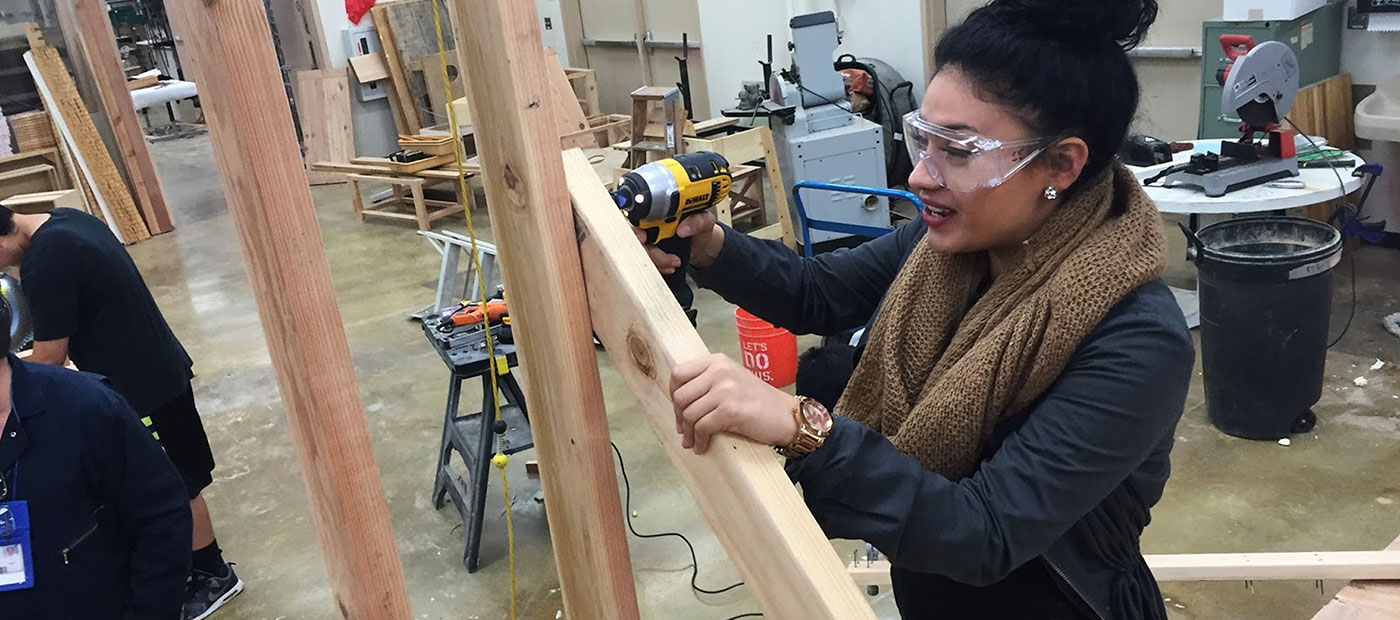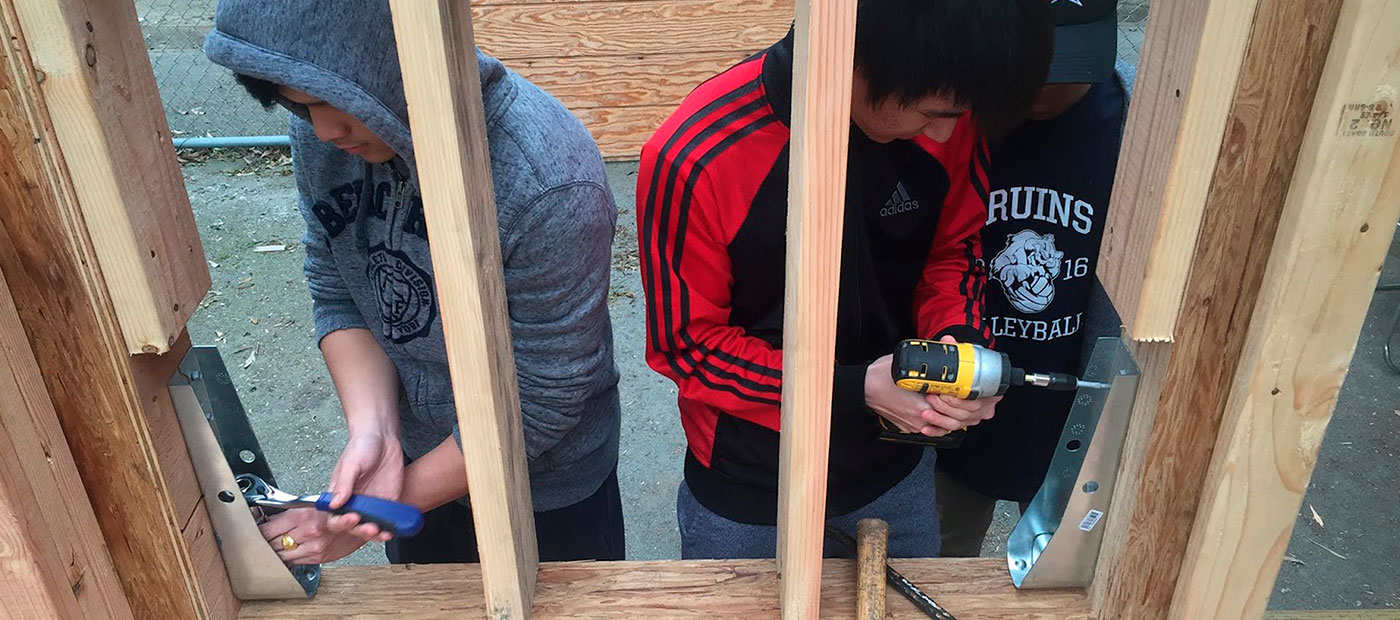Residential & Commercial Construction
Construction Technology 1 – Introduction
This course will introduce students to career opportunities within the sector and focuses on the manner in which residential and commercial structures are designed and built. The course covers construction and building design, performance, and sustainability, the study of safety, hand and power tools, planning and design, applicable mathematics, blueprint reading, trade nomenclature, residential and commercial construction standards, construction manufacturing standards, and other specialized skills. The pathway includes preparation for a Class B California License.
Construction Technology 2 – Intermediate
This course will build on foundational skills attained in the introductory course(s). Students will learn the impact of financial, technical, environmental, and labor trends on the construction industry. They will gain competence in mathematical calculations that are used in the trades, and interpret technical drawings and schedules. The course will cover techniques for proper site preparation and foundation layout. Students will gain competence in carpentry skills that prepare them to lay out, fabricate, erect, install and repair wooden structures and fixtures. Topics covered may also be: framing, installing drywall and interior/exterior finishes, building walls and partitions, and installing roof systems, floors and floor coverings, and electrical wiring. Students will learn to integrate and employ sustainable construction practices, and may develop skills that prepare them for a Class B California License.
Construction Technology 3 – Advanced
This course allows students to demonstrate mastery in skills attained in concentrator courses. Students will apply appropriate mathematical calculations, interpret technical drawings, and demonstrate techniques for proper site preparation and foundation layout. They will demonstrate carpentry techniques for the construction of a single-family residence, proper installation techniques of internal and external materials and finishes, employ sustainable construction practices, and install plumbing and electrical systems that adhere to industry standards. Students may be prepared for a Class B California License.

